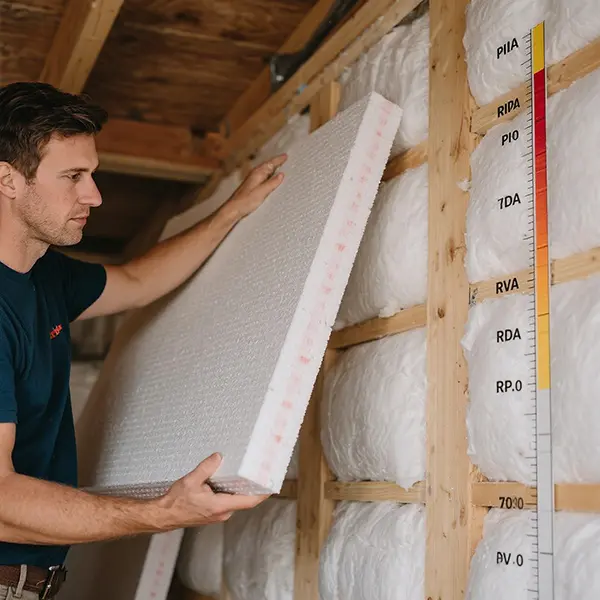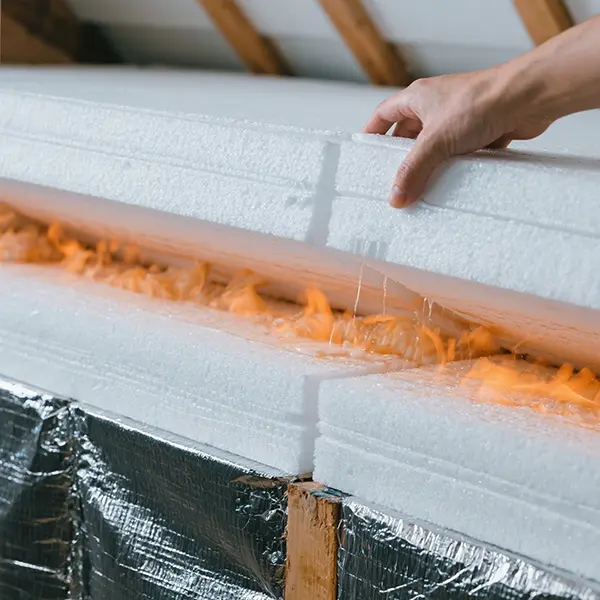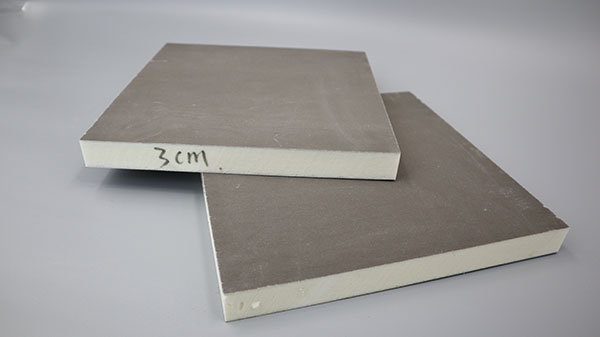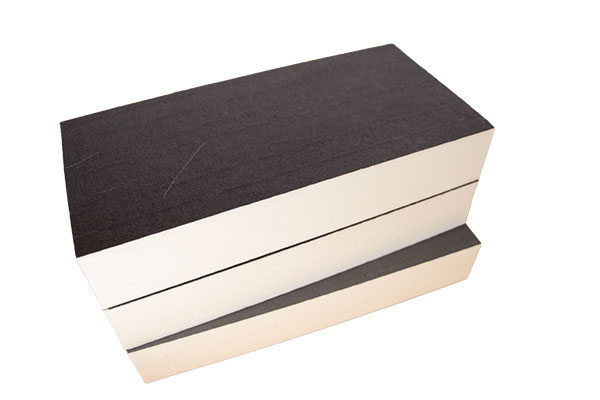If you’re researching insulation for buildings, R-value of PIRボード is a term you absolutely need to understand. Simply put, R-value measures how well a material resists heat flow. The higher the R-value, the better the insulation stops heat from escaping in winter or entering in summer. For PIR (Polyisocyanurate) boards – a top-tier rigid foam insulation – achieving a high R-value efficiently is one of its superpowers. This guide explains everything in plain language.

Why R-Value is Your Insulation’s Superpower
Think of R値 like a superhero’s shield against temperature changes. Whether it’s freezing cold or blazing hot outside, insulation with a high R-value (like PIR board) acts as a powerful barrier:
- Keeps indoor temperatures comfortable and stable
- Slashes energy bills (heating & cooling cost less!)
- Reduces carbon footprint
- Prevents condensation & moisture damage
- Makes buildings quieter (bonus soundproofing!)
PIR board’s exceptional R-value makes it a champion for walls, roofs, floors, and basements.It brings warmth to the house like a down jacket.
How is R-Value Measured?
Scientists measure R値 in metric units (m²·K/W) or imperial (ft²·°F·h/BTU). Don’t worry about the complex units! Just remember this key point:
Higher Number = Better Insulation Performance.
R-value of PIR board depends on:
- Material Type: PIR has an excellent inherent thermal resistance.
- Thickness: Thicker boards = higher R-value (e.g., 100mm PIR has roughly double the R-value of 50mm).
- Density & Structure: PIR’s fine, closed-cell structure traps air, blocking heat flow superbly.
- Age & Conditions: Quality PIR maintains its high R-value long-term with minimal degradation.
PIR Board R-Value: The Numbers Explained
So, what is the R-value of PIR board specifically? Typical values per 25mm (1 inch) thickness are:
- Metric: Approximately 1.20 to 1.35 m²·K/W per 25mm
- Imperial: Approximately R-6.8 to R-7.7 per inch
Why is PIR’s R-value so high? Its secret lies in the gas trapped within its millions of tiny, sealed bubbles (cells). This gas conducts heat much slower than regular air.
Comparing PIR to Other Insulation
See how PIR board’s R-value outperforms common materials:
| Insulation Type | Typical R-Value per Inch (Imperial) | Typical R-Value per 25mm (Metric) | Notes |
|---|---|---|---|
| PIR Board | R-6.8 to R-7.7 | 1.20 to 1.35 m²·K/W | Highest common rigid foam. Stable performance. |
| PUR Board | R-6.0 to R-6.5 | 1.05 to 1.14 m²·K/W | Similar to PIR but slightly lower. |
| EPS (White Bead Styrofoam) | R-3.6 to R-4.2 | 0.63 to 0.74 m²·K/W | Needs much greater thickness for same R-value. |
| XPS (Blue/Pink Board) | R-5.0 to R-5.5 | 0.88 to 0.97 m²·K/W | Good moisture resistance, but lower R than PIR. |
| Mineral Wool (Roll/Batt) | R-3.0 to R-3.8 | 0.53 to 0.67 m²·K/W | Good sound/fire performance, lower thermal R. |
| Fiberglass Batt | R-2.9 to R-3.8 | 0.51 to 0.67 m²·K/W | Common, budget-friendly, lower R per inch. |
PIR board offers the highest R-value per inch among widely used rigid insulation products. This means you can achieve the required insulation level (e.g., R-30 in a wall) with thinner PIR boards compared to EPS, XPS, or fiberglass. This saves crucial space in building designs!
Factors Affecting Real-World PIR R-Value
について stated R-value of PIR board is tested under perfect lab conditions. Real-world performance can be influenced by:
- Installation Quality: Gaps, compression, or poor fitting create “thermal bridges” where heat escapes, lowering the effective R-value. Proper installation is key!
- Temperature: PIR performs consistently well across a wide range of temperatures.
- Moisture: While PIR is highly resistant to water absorption (unlike some materials), significant long-term wetting can reduce performance. Good design prevents this.
- Facing: Foil facings on PIR boards act as radiant barriers, slightly boosting overall performance and protecting the foam.
Why Choose High R-Value PIR Board?
Selecting insulation with the best R-value per inch, like PIR, offers major advantages:
- Space Saving: Achieve high insulation levels without thick layers. Vital for wall cavities, slim roofs, or retrofits.
- Energy Efficiency: Maximize savings on heating and cooling bills year after year. High R-value PIR board pays for itself.
- Building Code Compliance: Meet increasingly strict energy efficiency regulations easily.
- Sustainability: Lower energy use directly reduces CO2 emissions. PIR itself often contains recycled content.
- Durability: PIR maintains its high R-value over decades with minimal degradation.

How to Calculate R-Value You Need
Building codes specify minimum required R-values for roofs, walls, floors etc. (e.g., R-30 for walls in Zone 5). To find the thickness of PIR board needed:
- Find your local building code requirement (e.g., R-30).
- Divide by the PIR’s R-value per inch (e.g., R-7 per inch).
- Thickness Needed = Required R-Value / R-value per inch of PIR
- Example: R-30 / R-7 per inch = ~4.3 inches (110mm)
Always check specific product data sheets from your PIR board manufacturer for exact R-values.
PIR – The High-Performance Insulation Choice
Understanding R値 is crucial for choosing effective insulation. PIR board consistently delivers one of the highest R-values per inch available in rigid foam insulation. This translates directly into superior thermal performance, significant energy savings, space efficiency, and long-term building comfort. When comparing insulation options, the exceptional R-value of PIR board makes it a top contender for both new construction and renovation projects demanding the best thermal efficiency.
Ready to maximize your insulation performance? Choose high R-value PIR boards from RUILIAN for lasting energy savings and comfort. Contact us for specifications and technical data sheets!

